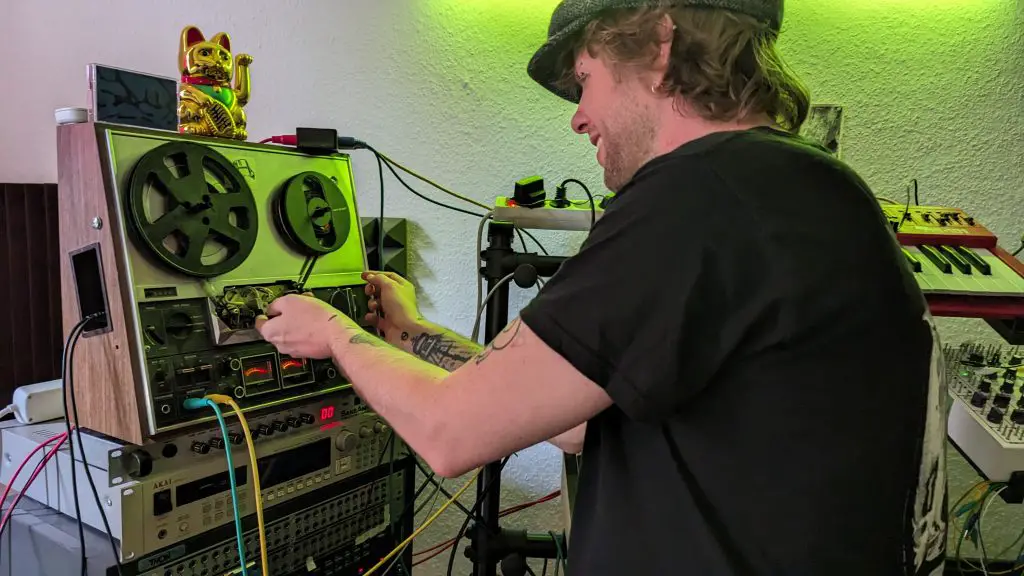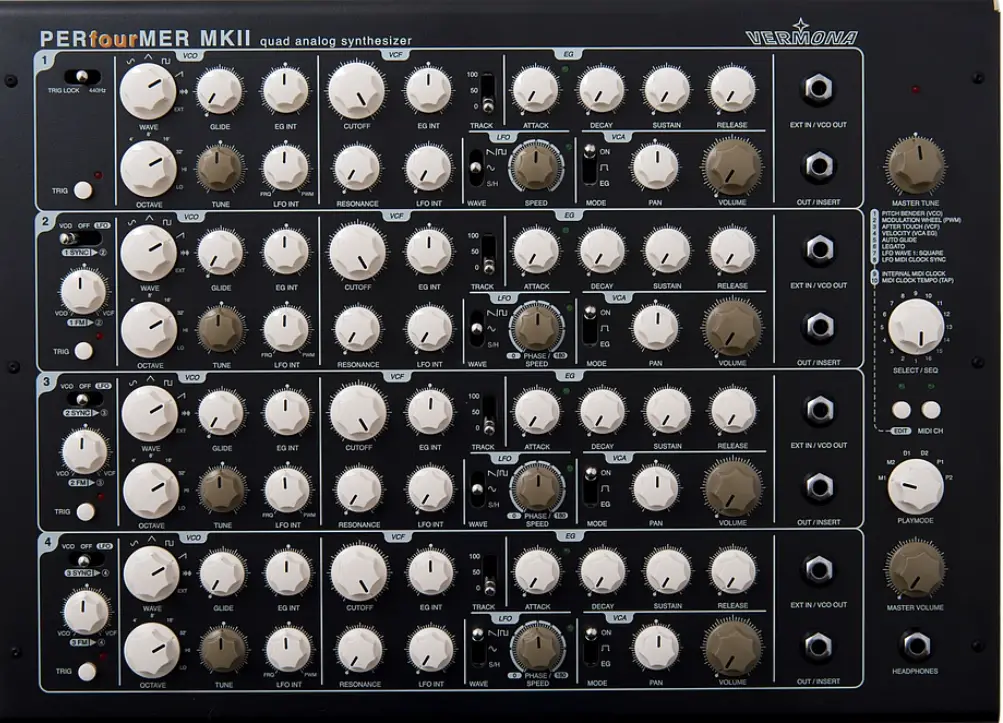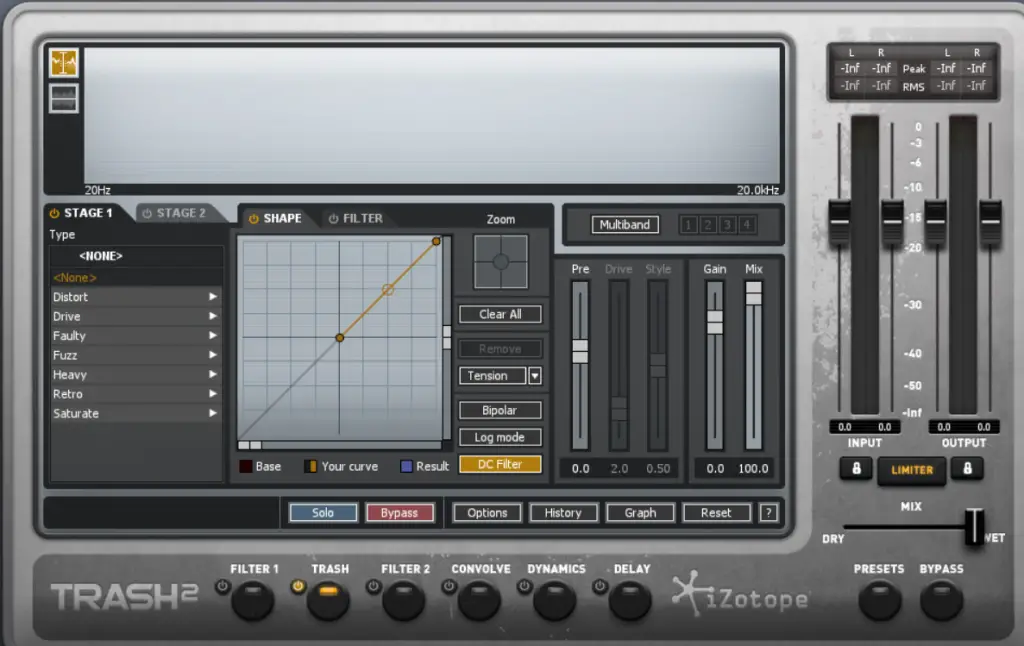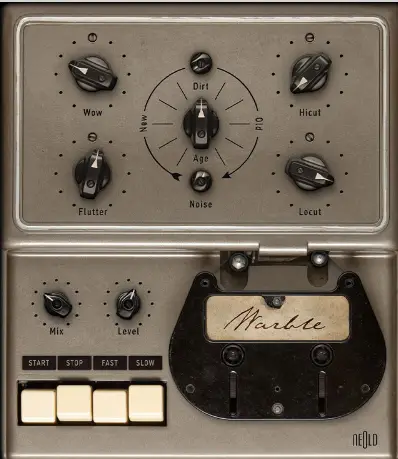A walkthrough of the new single by Mo Van Zandt – Produced by Eric Baldwin
The Berlin-based multi-instrumentalist and vocalist Mo Van Zandt seamlessly blends ethereal electronic soundscapes with retro drum machines and edgy synths, creating an auditory experience that is as innovative as it is captivating.
“Aporia” is a testament to the potential of longer tracks, featuring dynamic shifts in musical direction driven by breakbeat rhythms and a rich, glitchy wall of sound. Drawing inspiration from iconic artists such as Thom Yorke, Björk, and Burial. It’s a track produced alongside Eric Baldwin (below) – who takes us through how this ethereal leftfield anthem was made, in our latest “How It’s Made” series
Photo credit – Aloha Burns
Connect with Mo Van Zandt: Spotify | Instagram

PERforMER – Vermona

For the bass of the track I used a PERfourMER by Vermona. I really dig the Vermona sound which always has a really nice fat tone to it.
When Mo gave me the track the bass was already there but using an operator in Ableton. It sounded ok and at first I was working with that. A few weeks later one of these Vermona Perfourmer synths found its way into my studio and I was really just itching to use it, so I just did a test with this track to replace the bass. It really opened up the whole track and I hardly had to do much to the sound to get it to sit in the mix. We ended up using this synth on a lot of the album.
With bass it’s one of these things I feel I’ll always find out new ways to work with it, but my advice is to spend time focused on that area and try different tricks to make it sound tight and always reference other music to get an idea of what you’re aiming for. I feel once the bass is sorted the whole track starts to fall in place.
IZOTOPE TRASH 2

Izotope Trash 2 is such a powerful plugin and I love the flexibility it gives you to shape the distortion how you want.
In the middle of the track there’s a section with breaks and distorted guitar. Mo and I recorded the guitars live from an amp then I processed them in Trash 2, I think there’s about 4 layers of guitar totally smashed to pieces using a lot of feedback loops as well. A fun trick with distortion units is to feed them into a feedback loop on a mixer and adjust it so the feedback is just peaking in the spaces of the recording getting this push and pull effect. You can use a filter before the distortion to add more interesting tones.
SSL 4000 E

The SSL 4000 E is my main EQ for this whole project and album, I find it’s more rough sounding to my ears and has an amazing low end quality as well.
I always have it near the end of my mixing bus and I use its filters and the compressors. It’s such a flexible EQ, highly recommended. Using this style of EQ I think helps you make decisions based on sound and not on graphs. I like using things like Pro Q on more surgical problem
Neold Warble

For this whole record this was the plug in I reached for the most for Mo’s vocals. It sounds great when pushed and has a really musical distortion. It has a high pass and low pass that I will use to do basic frequency cuts.
As Mo’s vocals are very dynamic, I felt this was a great way to boost the energy in those loud vocal moments. It was one of those things when you just wanted to try out a new plug in and it works perfectly. It’s great to test these plugins to see how far you can push them, this ended up being the main plug in I used for the whole album that I felt gave Mo’s voice the character it needed for the record.
Writing tips by Mo Van Zandt
Tip #1:
Grab inspiration from unexpected places, far from your life. My characters come from nights out in Berlin, watching films like THX 1138, and playing Disco Elysium.
Tip #2:
Groove is Queen. Place samples into something you can hit and feel rhythm out in your body.
Tip #3:
Be open to big changes when co-producing with someone you really trust. I brought Charlie my song and he added a choir and breaks I could never have imagined myself.
Tip #4
(optional but encouraged): My heavier electronic pop is influenced by my time in post punk bands. To write with that energy again, we played electric guitar and washed that into a synth.
The post HOW IT’S MADE: MO VAN ZANDT – APORIA appeared first on Magnetic Magazine.